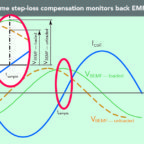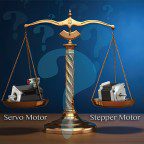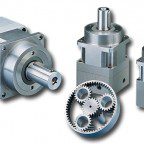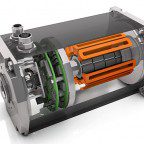
Heat and noise both depend on the type of stepper motor, the conditions in which it operates, and what functions the motor serves in the application.
Permanent-magnet stepper motors are usually most quiet, as they have a smooth rotor. Hybrid stepper motors are quiet as well. In contrast, variable-reluctance stepper motors are the noisiest type of stepper motor, no matter the application.
When a stepper motor moves a step, it does not stop immediately. Rather, it moves back and forth slightly before stopping.
Some things help address these stepper-motor problems. During operation, controls usually move the motor to the next step before letting it come to a complete stop on the last. Such continuous rotor advancement can help reduce vibration and noise. Furthermore, every stepper motor has a resonant frequency. In a typical unit, it’s excited when the motor runs at 150 to 300 steps/sec. Designers often avoid running the motor in this range as a way to minimize noise and vibration. Using a gearhead can also cut down on vibration, if it is sized and designed appropriately. Some stepper-motor types are also better than others in given applications. Those with smaller step angles are less prone to overshooting and undershooting, as they accumulate less torque. (See FAQ: What is pole count and why does it matter? for an explanation of steps and poles.) Appropriately sizing stepper motors can also help reduce noise and vibration. In some cases, dampers mitigate the vibration that’s non-preventable. Back-phasing damping is another option; here, controls apply a train of delayed electrical pulses to reduce vibration and noise.
Drives continuously supply stepper motors with current to keep the motors in position, so the motors can get hot. Heat is especially a worry when the application makes the drive exceed the motor’s current rating. Prevent current overdraw by appropriately sizing motors to the application at hand. Another tip: don’t operate stepper motors in environments subject to extremely high temperatures or where an enclosure or surrounding machinery will prevent good heat transfer from the motor. Use heatsinks where space and design permits.
Thank you to Nick Johantgen, formerly of Oriental Motor. For more information, also read Oriental Motors’ step-motor basics and Parker Hannifin’s Electromechanical Automation Div. FAQ: Why is my stepper motor getting hot?







Leave a Reply
You must be logged in to post a comment.